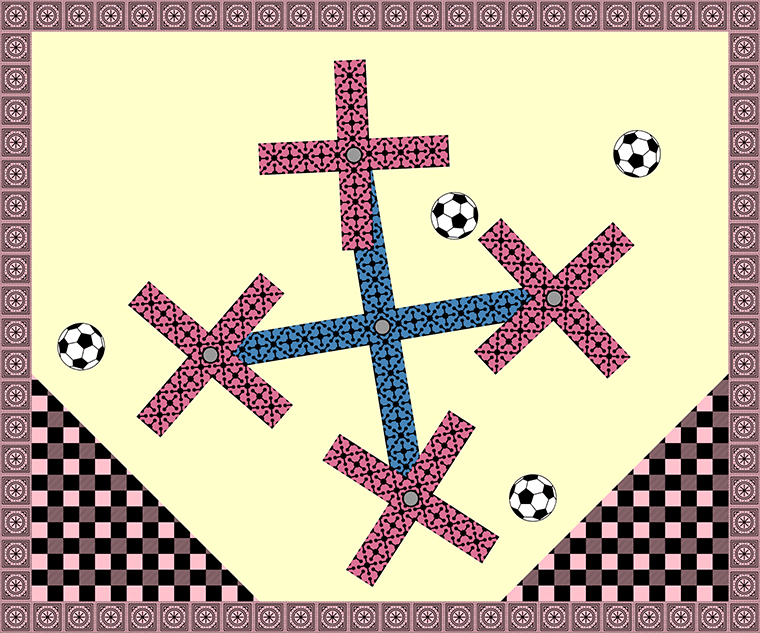A PoC of 2D physics running in Blazor WebAssembly (WASM) rendered using SVG and CSS.
- Run 2D physics in WebAssembly
- Implement the "game" logic in C#, with minimal JavaScript
- Minimal build process
- Run npm install to install Node packages (just types for DotNet JS Interop)
- Run the project in your IDE of choice. TypeScript is compiled as part of the build.
- To publish, run this command from the project directory: dotnet publish -c Release -o ./publish
- On its first render, the Razor component hosting the SVG invokes the JS function startGameLoop, passing an interop reference to itself
- JS function startGameLoop stores the Razor component reference
- JS function starts a requestAnimationFrame loop
- requestAnimationFrame function invokes Razor component to "tick" the Game instance
- Razor component ticks the physics world forward by the time elapsed since last ticked
- Razor component registers a state change to cause a re-render
- Razor component renders the bodies within the physics world as shapes in its SVG
- The demo version does default release mode trimming. You could probably get away with more aggressive trimming, at the risk of something not working.
- Instead of using native SVG attributes for specifying body coordinates and rotation, a CSS transform style on each node is used. This is to maximize the chance of the GPU being used, to speed up rendering.
- The SVG is scaled proportionally to fill the browser window. If you're running a very hi-res monitor, performance may vary.
- Physics engine: https://www.nuget.org/packages/Aether.Physics2D
- SVG soccer ball: https://cutthatdesign.com
- Other SVG shapes: https://heropatterns.com
